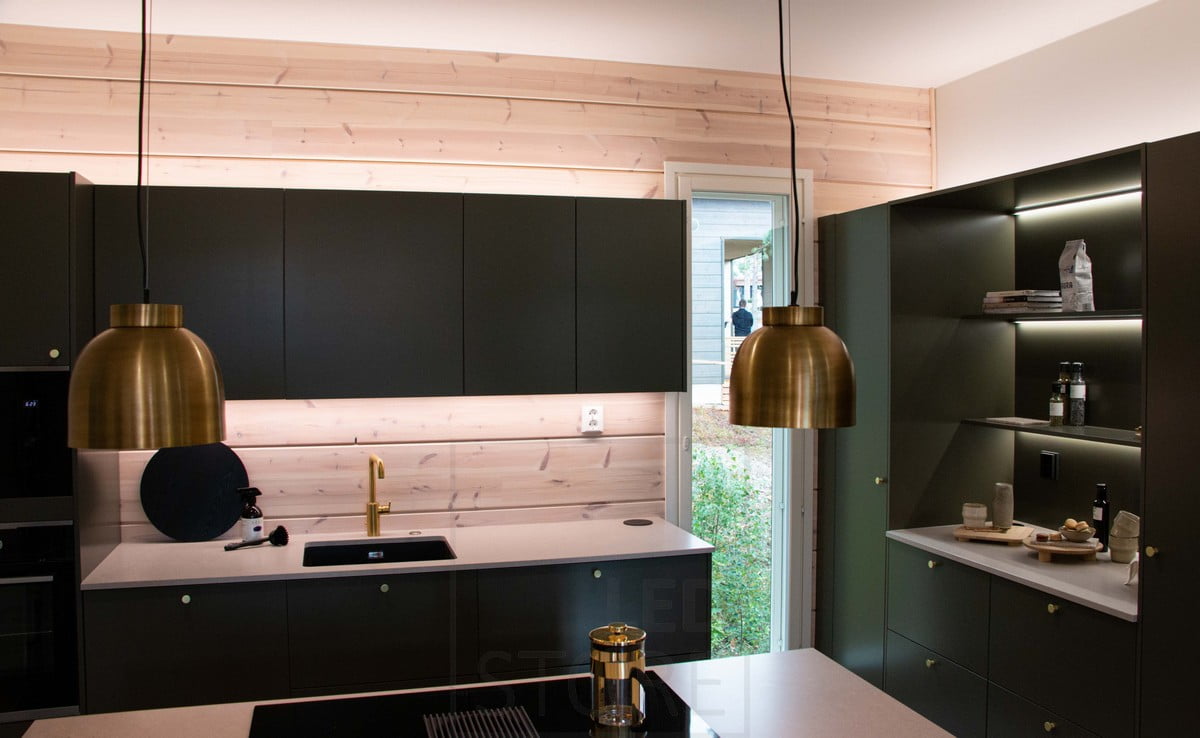Led lighting in lighting design offers unbeatable advantages, such as energy efficiency or the specific characteristics of LEDs. However, different spaces have their own specificities in terms of lighting design. This article looks at lighting design in different spaces through a few examples.
History of lighting design
There is no single inventor of lighting design in history, but one of the most famous lighting designers is Richard Kelly (1910-1977), an American pioneer of lighting design. His work has influenced lighting design principles and practices, and many of his projects have been groundbreaking. Kelly developed three basic principles that lighting designers often refer to.
- Ambient luminescence: this principle covers the uniform and uniform illumination of a space, creating a comfortable and functional environment. General lighting should be glare-free and aesthetically pleasing.
- Task lighting (focal glow): task lighting targets specific objects or areas where additional lighting is needed to perform certain activities, such as reading, working or cooking. Task lighting helps to improve functionality and ergonomics.
- Stage lighting (play of brilliants): this principle refers to the play of light and shadow that creates interesting and atmospheric visual effects. Stage lighting can highlight architectural details, works of art or other objects, creating personality and drama.
Richard Kelly did not publish these principles in one particular publication or book. Instead, his ideas and principles of lighting design spread through his work, lectures and teachings.
Kelly’s pioneering work on lighting for architectural projects such as the Seagram Building and the Kimbell Art Museum influenced the design practices of his contemporaries and posterity. Kelly’s ideas on lighting design and his three principles have been incorporated into lighting design textbooks and industry publications, and have had a significant impact on the development of lighting design.
What are the main principles of lighting design?
Lighting design principles are important to achieve optimal lighting and visual appearance in a space. While every space is different, there are several principles that apply to all spaces. From lighting design to the basics of lighting design. From the above three principles, lighting design has evolved and today the principles can be applied and extended as follows.
Layered effect
This means having several light sources in the room, such as ceiling lights, table lamps, indirect light and floor lamps. The combination of these different light sources allows light to be distributed evenly throughout the room. In addition, the layering effect allows you to adjust the level of lighting required in different parts of the room.
Distribution of light
This means that the light should be evenly distributed throughout the room. Light distribution can be achieved by using different light sources and luminaires that illuminate all parts of the room evenly.
Colour temperature
The colour temperature affects the look and feel of a room. Warm white light creates a warm and cosy atmosphere, while cold white light can feel clinical and uncomfortable. When designing lighting, it is important to take into account the purpose of the room and choose the right colour temperature accordingly.
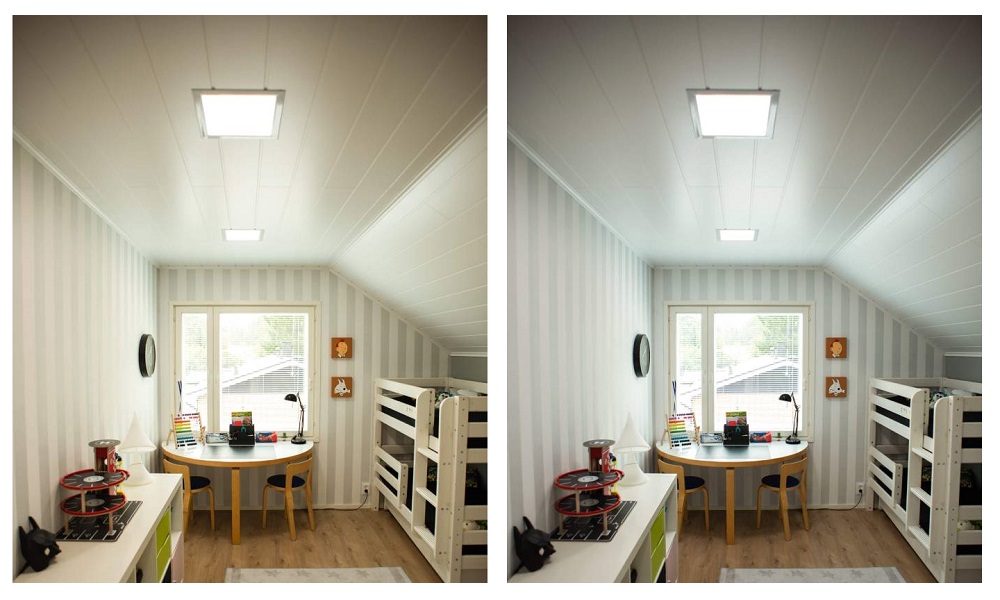
Possibility to adjust the lighting
Adjustable lighting means that lighting can be adjusted to suit different situations and needs. Dimmable lights are one way to control lighting, but motion sensors and timers are also handy lighting control options.
Energy efficiency
By using energy-efficient light sources and lighting fixtures, you can make significant energy savings and reduce your electricity bill. Energy efficiency can also be improved by avoiding unnecessary lighting.
Compliance with lighting design principles
Following the principles of lighting design can help create a space that is both visually pleasing and practical. Lighting has a significant impact on the atmosphere and comfort of a space, so it is important to plan it carefully.
In addition to the principles of lighting design, it is important to take into account the intended use of the space and the needs of the occupants. For example, bright light is often needed in the office, while in the bedroom you usually want a calm atmosphere. It is also important to take into account the size and shape of the space when designing lighting.
Lights and light sources used in lighting design are important factors in the success of lighting. LED lights have become more common in recent years due to their energy efficiency and long life. The design and choice of materials can also influence the look of a space.
Following lighting design principles is not only an aesthetic choice, it also has economic implications. Energy-efficient lighting can save significantly on electricity bills, and avoiding unnecessary lighting can further reduce energy consumption.
Before we talk about lighting design in spaces, let’s return for a moment to light protection, i.e. LED lights.
How do LED lights differ from conventional lights in lighting design?
Let’s start by delving into the unique characteristics of LED lights and how they differ from traditional light sources. LED (Light Emitting Diode) lights are more energy efficient, more durable and more flexible than incandescent or fluorescent lamps, for example. They produce less heat and allow for a wider range of colour tones and light intensities, making them an excellent choice for lighting design.
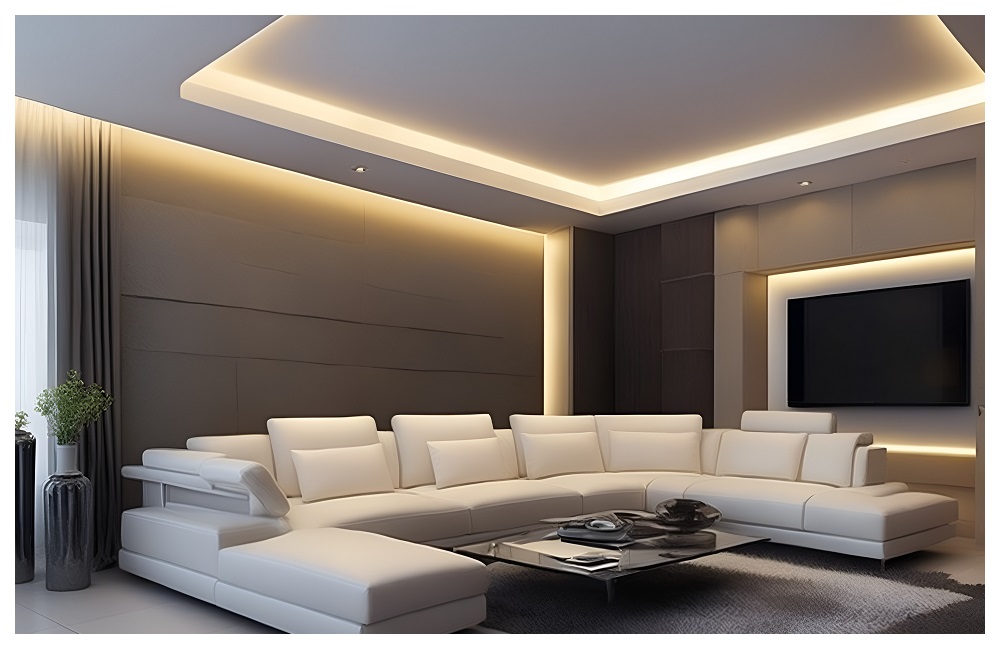
LED lighting in lighting design and specific characteristics of LEDs
Unlike conventional lights, LED lights can produce light directly in a specific direction, reducing wasted light and improving lighting efficiency. This in turn creates opportunities to create spot lighting, mood lighting or other special effects – all with lower energy consumption.
LED lighting has also become increasingly popular in art and cultural venues, as it allows valuable works and objects to be highlighted while minimising the thermal and UV effects of the light. This protects the works and prolongs their lifespan.
Long life of LED lighting
In Finland, where the dark months are long and the need for lighting is high, LED lighting also has the advantage of a long lifetime. Compared to incandescent bulbs, LED bulbs last up to 25 times longer, reducing both the need to replace lights and the amount of waste. In addition, the energy efficiency of LED lights is particularly important in the context of climate change mitigation and energy saving targets.
High quality LED light with good colour rendering
In lighting design, LED lights can be used to create a wide variety of moods and environments because of their excellent colour rendering properties. In restaurants and hotels, for example, dimmable LED lights can be used to create a cosy and inviting atmosphere. In public spaces such as schools and hospitals, LED lighting can also promote well-being and concentration.
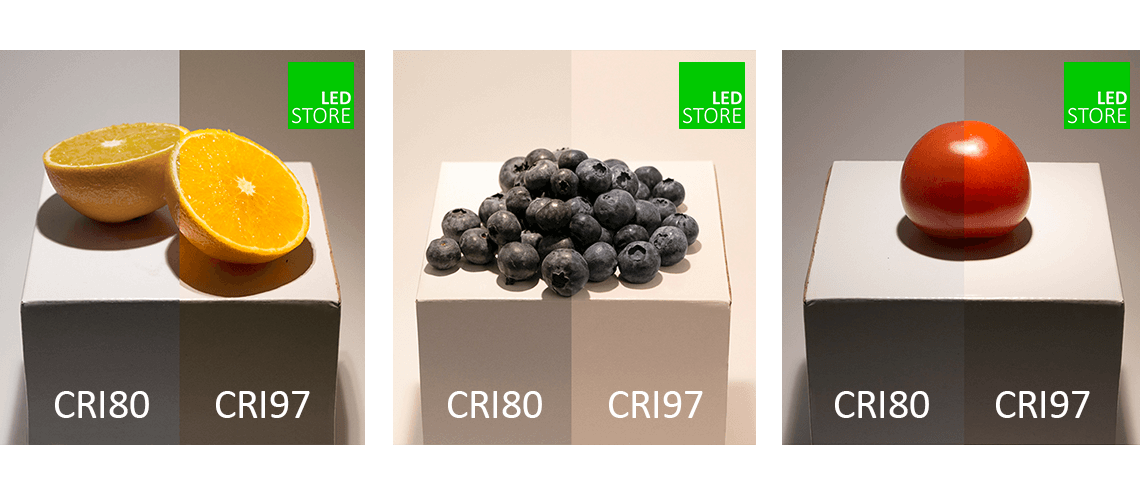
Sustainable development with LEDs
LED lights are not only a tool for lighting design, but also play an important role in saving energy and promoting sustainability. Finnish businesses and individuals can play their part in the fight against climate change by choosing LED lighting instead of traditional light sources.
LED enables highly intelligent lighting
LED lighting has also opened up new possibilities for so-called intelligent lighting. Combining energy efficiency, comfort and safety, smart lighting is particularly popular in modern homes and offices. For example, LED lights with motion sensors can automatically switch on and off as needed, saving energy and increasing safety.
Led lights are important for the lighting designer
In Finland, where lighting plays a major role in people’s everyday lives, the potential of LED lights is huge, and their increasing use will certainly be a major factor in the future of lighting design.
They can be used to create inspiring and functional lighting solutions that meet both user needs and environmental requirements.
Overall, LED lights offer a wide range of advantages in lighting design compared to conventional light sources. They can be used to create memorable, individual and functional lighting solutions for different spaces. Take façade lighting, for example: LED lights allow you to highlight buildings and bring out their architecture in a whole new way.
How to design lighting for your home?
Home lighting is an important part of home decoration and practicality. The aim of lighting design is to create a space that is both functional and visually pleasing. By investing in the lighting design of your home, you can create a functional and visually pleasing environment that meets the needs and desires of the home’s occupants. When designing lighting for your home, it is important to take the following things into account.
What is done in the space?
Different rooms, such as the living room, kitchen and bedroom, need different lighting. For example, in the living room you usually want softer lighting, while in the kitchen you need bright, directional light.
Correct placement of lighting in the room
Light sources should be positioned to illuminate the required areas, while avoiding unnecessary light spillage into the environment. For example, desk lamps and reading lights can be appropriately positioned in work areas.
Light intensity and colour temperature
Home lighting should use different intensities and shades for different situations. For example, brighter light is useful for reading and crafting, while softer light is good for relaxing.
Lighting systems
When planning lighting, it is worth considering the use of different lighting systems. For example, dimmable lights and intelligent lighting systems can provide versatile lighting options and adaptive situations. These systems include DALI or Zigbee.

Selection and placement of lights
For home lighting, it’s a good idea to choose lights that suit the style and needs of the space. The placement of lights is also important to ensure that they illuminate the right areas and create a functional and pleasant atmosphere.
What is the most important thing to consider when designing outdoor lighting?
Outdoor lighting is important not only for safety, but also for appearance and atmosphere. When designing outdoor lighting, it is important to take several factors into account.
Positioning light sources in the home
One of the most important factors is the placement of light sources. Light sources should be positioned to illuminate the required areas, while avoiding unnecessary light spillage into the environment. It is also worth considering the direction and intensity of the light.
Outdoor colour temperature
Another important factor is the colour temperature of the light. For outdoor lighting, it is usually better to use warmer light tones to achieve an inviting and cosy atmosphere. Shades that are too cold can feel uncomfortable and clinical.
Outdoor durability and protection
The third important factor is the durability and protection of lights. Outdoor lights must be able to withstand varying weather conditions and protect light sources from moisture and dust. The material and design of lights are important factors in their durability.

Energy efficiency in outdoor home lighting
The fourth important factor is energy efficiency. Outdoor lighting can consume a considerable amount of energy, so energy-efficient led lights and light sources are recommended. In addition, the possibility of dimming light sources can help save energy by avoiding unnecessary lighting.
Outdoor use of lighting
Finally, it is important to consider the intended use of the outdoor lighting. For safety lighting, it is important to illuminate walkways and stairs, for example, while mood lighting can be more accent lighting and indirect lighting.
How is lighting design used in commercial spaces?
Let’s start with the importance of lighting design for commercial spaces. The purpose of lighting in commercial premises is to create a functional, safe and comfortable environment for both customers and staff. Lighting design is an essential part of interior design and can have a big impact on the atmosphere, customer experience and sales. It is important to note that there are many different aspects to lighting design, such as the placement of light sources, colour temperature and light intensity.
Energy efficient lighting in business
Today, companies need to take energy efficiency and environmental friendliness into account in their business. This means that lighting design should aim for energy-efficient light sources such as LEDs. LED lights not only save energy, they also have a long lifetime and a smaller environmental footprint.
Retail lighting needs in Finland
In Finland, winters are long and dark, making lighting even more important. The lighting in shops and other commercial premises should be inviting and warm, so that customers feel more comfortable for longer. In addition, the lighting should support the presentation of the products and attract customers to explore them. High colour rendering CRI 95 LED tubes bring out the colours well.
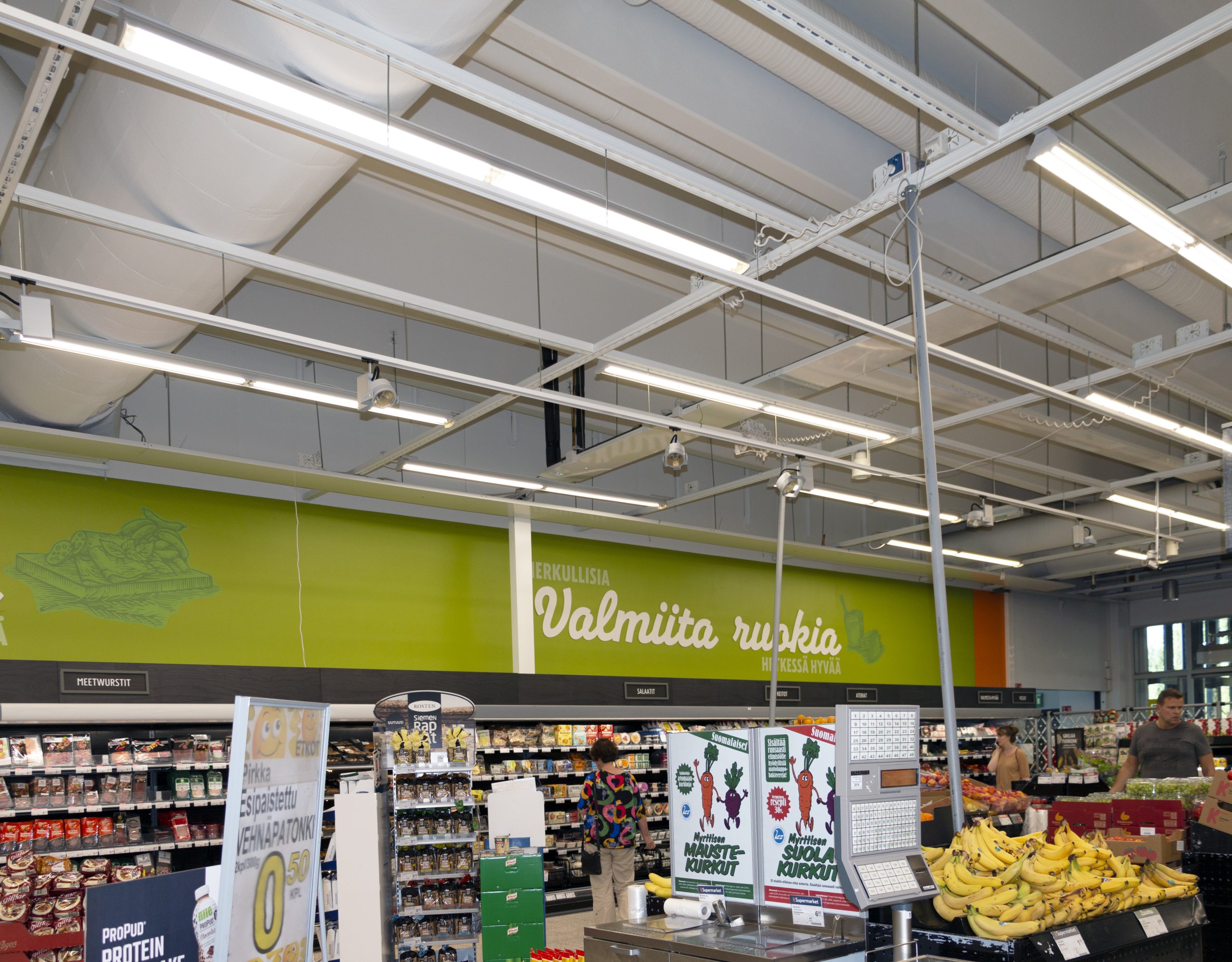
Windows as part of lighting
Natural light from windows can be an effective and mood-enhancing light source. Making the right use of light from windows can save energy and create a natural and fresh atmosphere in commercial spaces. In particular, the use of daylight can reduce the need for artificial light and improve the energy efficiency of spaces.
Different lighting functions in commercial premises
Lighting design needs to take into account a wide range of functions, such as general lighting, task lighting and mood lighting. General lighting creates a uniform illumination of the space, enabling safe movement and activity. Spot lighting focuses on specific objects, such as products or works of art, highlighting them and attracting the attention of customers. Ambient lighting, on the other hand, creates a pleasant and welcoming atmosphere that encourages customers to stay longer.
The role of lighting in store lighting
Good store lighting is an important part of effective sales, helping to draw customers in and direct their eyes towards specific products. Lighting can be used to create an experience and make products look more attractive. For example, coloured lights can enhance the colourfulness of products, and dynamic lighting can add vibrancy to spaces.
The role of the lighting designer in lighting commercial premises
A professional lighting designer is able to take into account the different lighting needs and functions, and to choose the right light sources and place them optimally. The designer’s expertise will also help you take advantage of the latest technologies, such as smart lighting, which can improve energy efficiency and provide more versatile lighting solutions. The help of a designer can be invaluable in achieving the best possible results in commercial spaces.
Take into account the use of the premises
Restaurants, hotels and offices, for example, require a different approach to lighting design. In restaurants and hotels, the emphasis is on atmosphere, while in offices the focus is more on functionality and work ergonomics. The lighting design of each space must take into account its specific needs and objectives in order to achieve the best possible result.
In sports fields and outdoor areas, LED lighting has proven to be an excellent solution. It can achieve uniform and efficient lighting that minimises glare and improves the comfort of athletes and spectators. In addition, the long lifetime and low maintenance requirements of LED lights make them a cost-effective choice for such applications.
The impact of lighting on the aesthetics and architecture of spaces
Lighting can be used to emphasise the shapes, materials and colours of a space, as well as to create depth and interesting shadows. Proper lighting of architectural elements can improve the visual appearance of a space and attract customers to take a closer look. Outdoor lighting is also an important part of lighting design in commercial spaces, helping to create a pleasant and safe environment and increasing the visibility and recognition of the space.
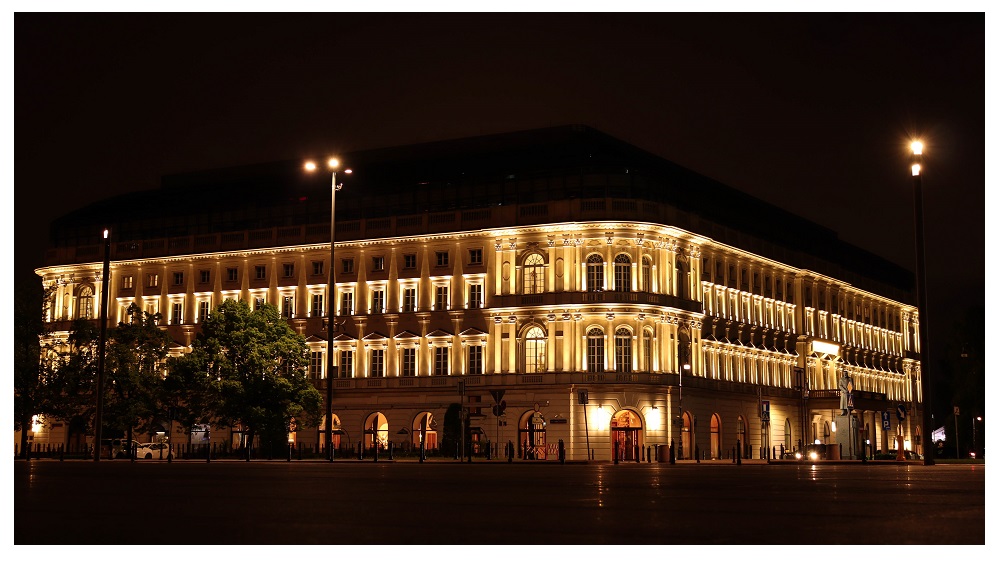
The importance of lighting for well-being and ergonomics
In offices in particular, lighting should be bright enough to allow workers to perform their tasks without eye strain. The colour temperature of light also affects the state of alertness and mood of workers: warmer light can be relaxing, while colder light can improve concentration and efficiency. Properly designed lighting contributes to the well-being of workers and supports work ergonomics.
In summary, lighting design plays a major role in the functionality, comfort and sales of commercial premises. It takes into account many different aspects, such as energy efficiency, aesthetics and the specific needs of different spaces. The expertise of a professional lighting designer can help you achieve the best possible results and ensure that the lighting in your premises supports their functions, architecture and overall ambience. In Finnish conditions, it is also important to take into account the long and dark winters, when the role of lighting is even more important.
What factors should be considered when designing industrial lighting?
Industrial lighting is a very important part of industrial operations. Efficient and effective industrial lighting enables a safe working environment and improves productivity. Several factors should be taken into account when designing industrial lighting.
Light intensity at the destination
In industrial environments, bright light is usually required to work safely and efficiently. Light intensity should be sufficient in all working areas. For precise work at the workstation, you need light close up. One good way is to custom-order a LED profile for your workstation.
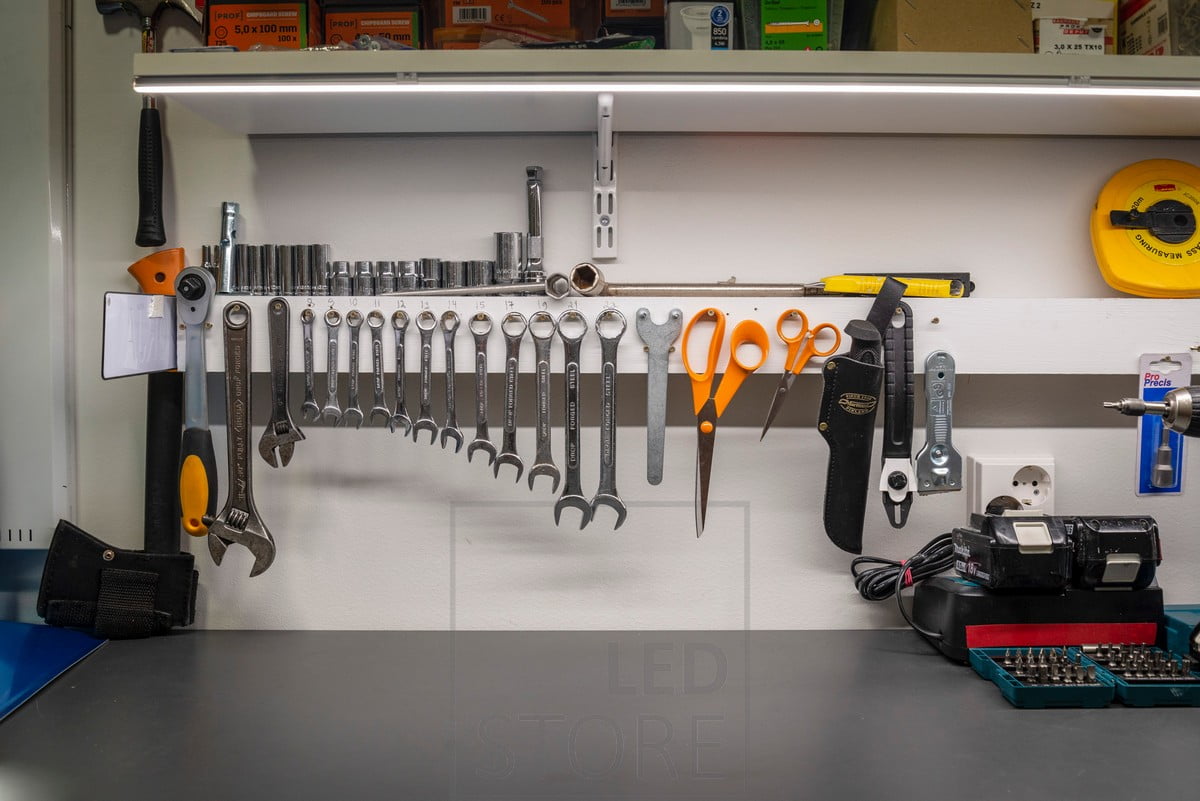
Colour temperature of light in industry
Industrial lighting should use light shades that give a natural and bright light. Warmer tones can make a space feel cosy and comfortable, but shades that are too cold can feel uncomfortable and clinical.
Flat light
Industrial lighting should take into account all working areas and illuminate them evenly. Inconsistent lighting can reduce working conditions and even cause eye strain.
Durable lights for industry
In an industrial environment, lights must be able to withstand heavy wear and shocks. It is also important to protect lights from moisture and dust. Of course, it depends on the industry, as some industries even require explosion resistance, while others require heat resistance. IP65 is usually the most important basic requirement in industry
LED on the ceiling
Energy-efficient industrial lighting can save significant amounts of energy and reduce electricity bills. Energy efficiency can be improved by using LED lights and automatic light control systems.
Use of the space
Take into account the intended use of the industrial lighting. For example, brighter lighting can be used in storage areas, while directional lighting can be used in workshops.
How is lighting design used in public buildings?
Let’s start by looking at the role of lighting design in public buildings. Lighting has a major impact on the usability, comfort and safety of spaces. We will look at how lighting design can improve the functionality and aesthetics of public buildings.
Lighting design in public buildings is a complex and multifaceted process that requires careful consideration and collaboration with the various parties involved. Let’s go through a few important points about lighting design in public spaces.
Consider different light sources
Natural light is an important part of public lighting, as it contributes to human well-being and energy efficiency. Window design should aim to maximise natural light and consider the orientation and shading of windows. Naturally, this also has an impact on the lighting design. In public spaces, occupancy is often higher during the day, when more natural light enters the space.
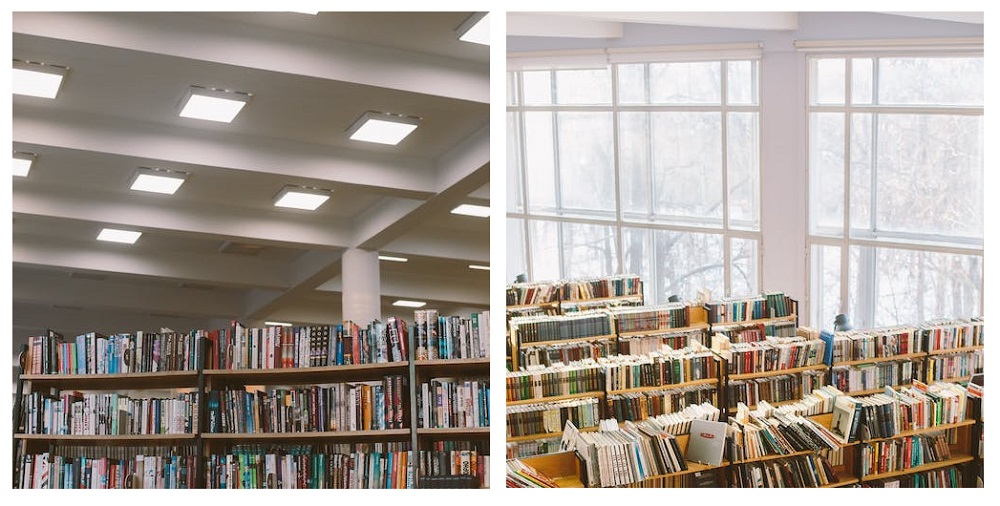
Main categories of lighting
Artificial lighting in public buildings can be divided into three main categories: general lighting, task lighting and mood lighting.
General lighting in public areas
General lighting provides uniform and bright light inside the building, enabling safe and efficient use of the premises.
Spot lighting in public spaces
Spot lighting, on the other hand, focuses on specific spaces or objects, such as works of art or architectural details. This helps to create a visual hierarchy and highlight important elements.
Ambient lighting in the public space
Ambient lighting can be used to create a pleasant and inviting atmosphere that encourages people to spend time in the building.
Energy efficiency and environmental friendliness in public space
Lighting design must also take into account energy efficiency and environmental friendliness. LED lights are an excellent choice because they consume less energy and last longer than traditional incandescent bulbs. In addition, lighting control systems such as motion sensors and timers can help save energy and reduce the carbon footprint. This is particularly important in public spaces, where lighting can be on 24/7.
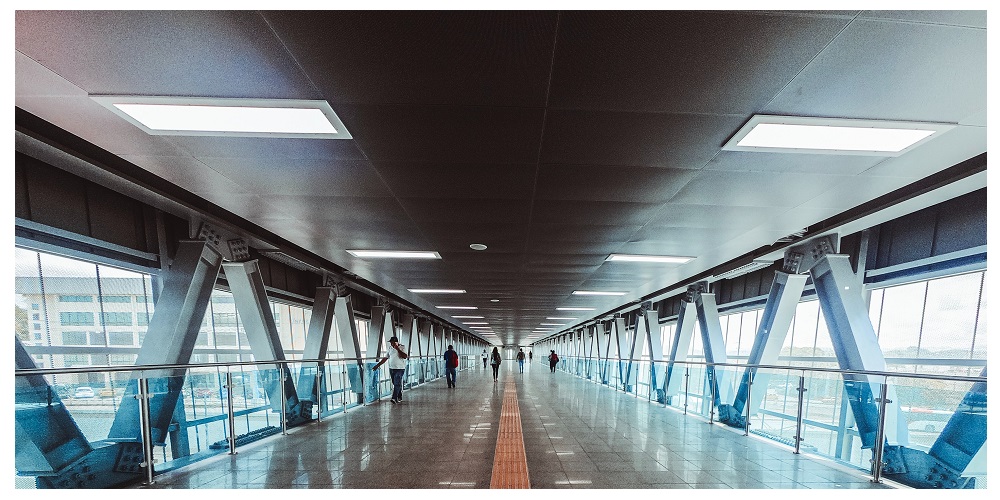
Public lighting according to users
When designing lighting for public buildings, it is important to take into account the needs and preferences of different users. For example, for elderly and visually impaired people, lighting intensity and contrast are particularly important factors. In children’s spaces, the use of colour and playful elements can add to the attractiveness and comfort of the space.
Make your facade look good and safe with lighting
It is also a good idea to take into account the exterior lighting of the building. Façade lighting can highlight architectural details, create security and improve the visibility of a building at night. For example, energy-efficient and long-lasting LED lights are an excellent choice for outdoor lighting.
Keep the conversation going
It is important for a lighting designer to work in collaboration with other professionals, such as architects, interior designers and electrical experts. This ensures that lighting solutions support the overall building and meet the needs of all users.
Accessible lighting
The importance of accessible lighting in public buildings has increased in recent years. For example, uniformity of lighting and sufficient luminosity are important factors, especially for staircases, lifts and other structures that facilitate movement.
Intelligent lighting for public spaces
Intelligent lighting technology offers many opportunities to improve the lighting design of public buildings. For example, lighting control and regulation systems, such as intelligent lighting control systems, can improve energy efficiency and user experience.
The most popular schemes include. DALI, KNX.
Lastly
LED lighting is therefore used in many spaces and its special features such as small size, power, directionality are important tools for the lighting designer. LED lights have brought new possibilities to all lighting design and the use of indirect light and aesthetics has increased dramatically in lighting design.
It is dark in Finland for half the year, and that gives us a special situation when it comes to lighting design. In public spaces and the workplace, as well as in homes, the power of lighting helps you to cope. So don’t forget that well planned is half done!
Led lighting expert
LedStore has been a specialist in Led lighting since 2010. We have our own product design, so our products are technologically state-of-the-art.
We focus on light colour temperature controlled and high colour rendering index lights. We do around 500 lighting designs in a year.
We offer a service of custom made led strips, i.e. custom made led light strips in profile. Also installed.
Remember that we are always ready to offer our help to you along the way, by email (myynti@ledstore.fi) and by phone (045 251 4510). As always, feel free to share photos of your own projects on social media at ledstore.fi at Instagram and ledstore.fi at Meta. We love to see the cool things done by our LEDs, and it also helps to provide inspiration for those who are not sure about the power and awesomeness of LEDs. Did you know that we already have over 3500 pictures of our LED installations in our Gallery!
Led Lights Gallery:
Product gallery: Pictures of products in different installation locations
Indirect light: Indirect light in different spaces
Room-specific: Light in different rooms
References: Complete houses that have been photographed

